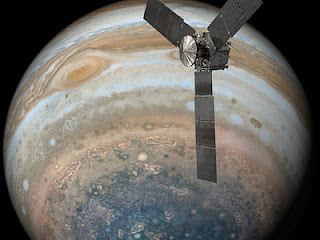Temperature
Temperature
is a physical quantity that expresses hot and cold. It is the manifestation of thermal energy, present in all matter, which is the source of the occurrence of heat, a flow of energy, when a body is in contact with another that is colder or hotter. Temperature is measured with a thermometer.
In physics, temperature is defined as the average kinetic energy of the particles of matter. When particles of matter move more quickly, they have more kinetic energy, so their temperature is higher.
Daytime on one side of the moon lasts about 13 and a half days, followed by 13 and a half nights of darkness. When sunlight hits the moon's surface, the temperature can reach 260 degrees Fahrenheit (127 degrees Celsius). When the sun goes down, temperatures can dip to minus 280 F (minus 173 C).
Spacewalking astronauts face a wide variety of temperatures. In Earth orbit, conditions can be as cold as minus 250 degrees Fahrenheit. In the sunlight, they can be as hot as 250 degrees. A spacesuit protects astronauts from those extreme temperatures.
The temperature on Mars may reach a high of about 70 degrees Fahrenheit (20 degrees Celsius) at noon, at the equator in the summer, or a low of about -225 degrees Fahrenheit (-153 degrees Celsius) at the poles.
Venus temp It appears that the surface temperature ranges from about 820 degrees to nearly 900 degrees F. The average surface temperature is 847 degrees F., hot enough to melt lead.
Mercury has almost no atmosphere. Because it is so close to the sun, it can be very hot. On its sunny side, Mercury can reach a scorching 800 degrees Fahrenheit! (But Mercury is not the hottest planet in the solar system.
At a temperature of just 50 degrees above absolute zero – -223°C – OGLE-2005-BLG-390Lb snatches the title of the coldest planet. At about 5.5 times the Earth’s mass it is likely to be a rocky planet too. Though not too distant from its host star at an orbit that would put it somewhere between Mars and Jupiter in our solar system, its host star is a low mass, cool star known as a red dwarf.
Planet DENIS-P J082303.1-491201 b with the equally unpronounceable alias 2MASS J08230313-4912012 b has 28.5 times the mass of Jupiter – making it the most massive planet listed in NASA’s exoplanet archive.




Comments
Post a Comment